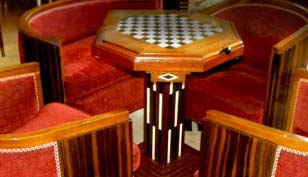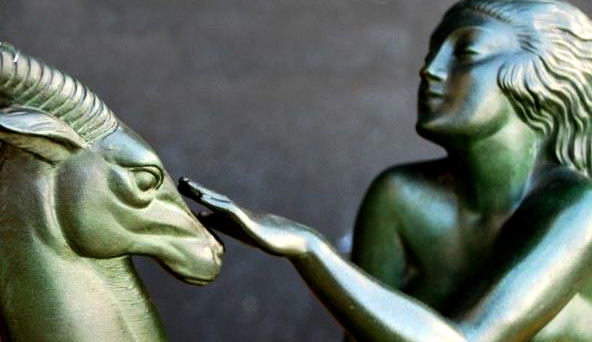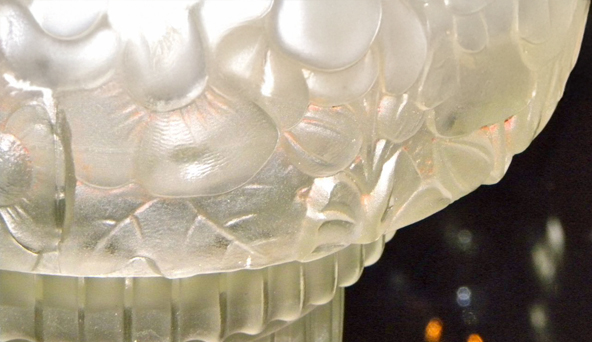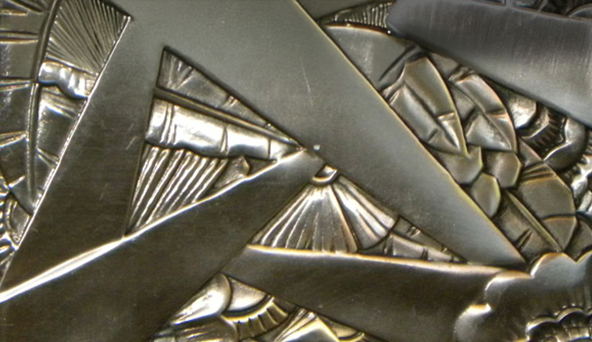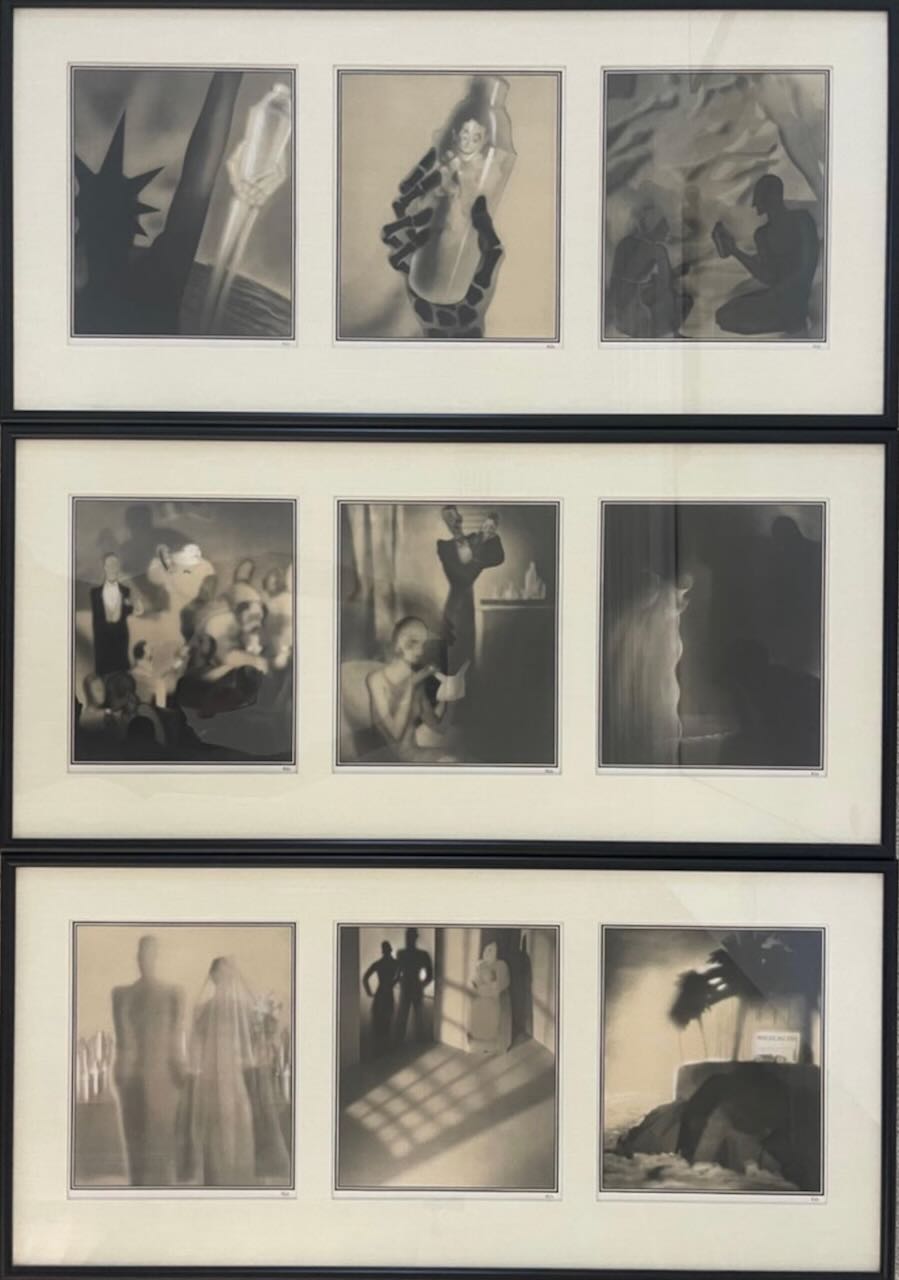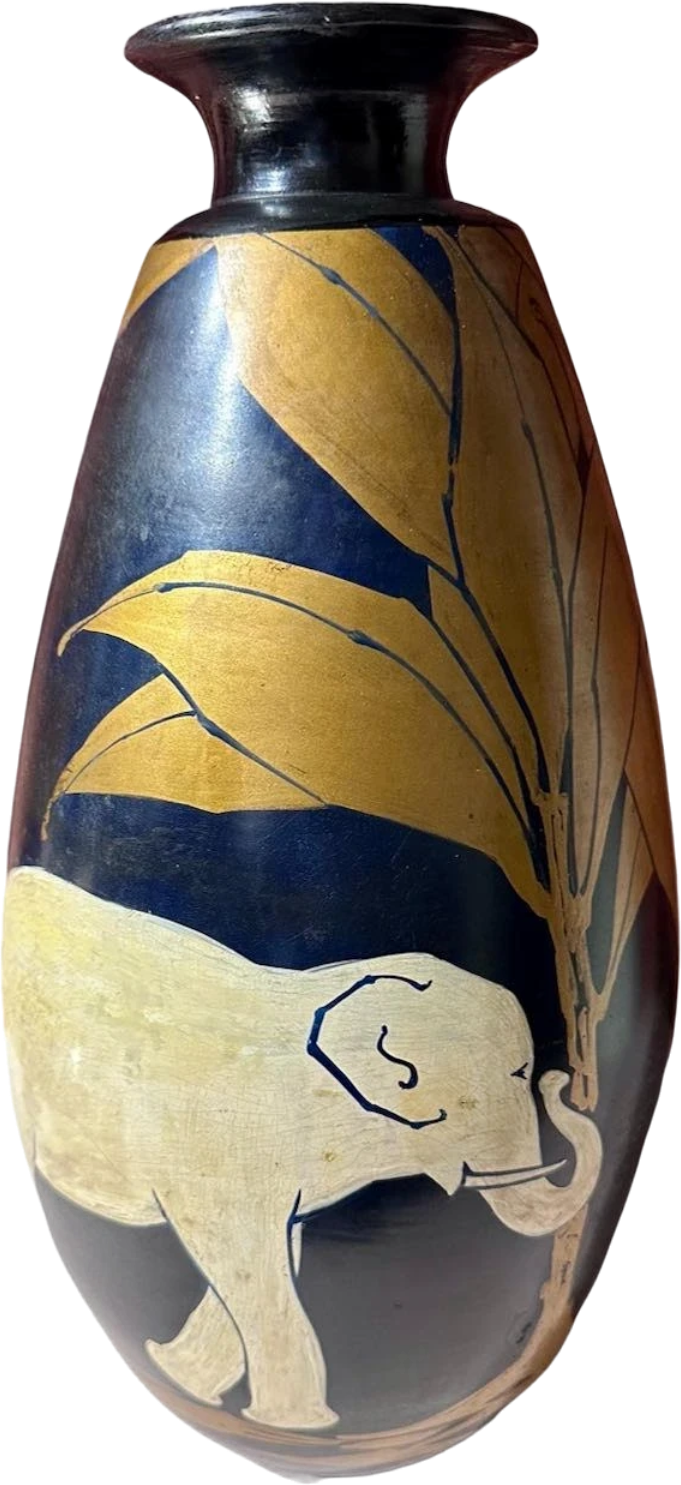Accessories
"Rose et Noir" Commentary on Social Drinking Triple Triptych by Paul Iribe
"Rose et Noir" Commentary on Social Drinking Triple Triptych by Paul Iribe
This rare Art Deco collection titled "Rose et Noir" is a group of three framed triptychs, comprising nine lithographic images by Paul Iribe. Each haunting vignette serves as a commentary on social drinking, with a recurring motif of cocktail shakers that symbolize the growing cocktail culture of the early 20th century. The narrative illustrates the unsettling effects of American cocktails on a newly married couple, blending social critique with striking modernist design. Included with the lithographs is a booklet by René Benjamin, Dialogue Moderne en Trois Temps et Trois Cocktails, along with the original portfolio cover, published by Parisian wine merchant Établissements Nicolas Dessins (France).
Complete sets of the Rose et Noir triptychs, particularly those with the accompanying René Benjamin text and original portfolio cover, are highly sought after by collectors. Framed in silk moiré and preserved in very good vintage condition, this ensemble is not only a conversation piece but also a museum-worthy artifact of Art Deco social history. For collectors of fine Art Deco prints and portfolios, this represents a rare opportunity to acquire a work that bridges cultural satire and visual modernism. Great addition to any cocktail shaker collection as these images outline the fascination and style of collecting and using cocktail shakers during this period and today.
Paul Iribe (1883–1935), born in Angoulême, France, was a celebrated illustrator, designer, and satirist. Early in his career, his works appeared in major Parisian journals such as Le Temps and Le Rire. In 1906, he co-founded the avant-garde satirical journal Le Témoin, which drew the attention of fashion designer Paul Poiret. Iribe went on to illustrate Poiret’s groundbreaking 1908 portfolio Les Robes de Paul Poiret racontées par Paul Iribe, a limited edition that redefined modern fashion illustration with bold Fauvist colors and Japanese-inspired flat planes. Throughout his career, Iribe’s illustrations and designs reflected both wit and cultural critique, making this series a powerful example of his enduring legacy.
